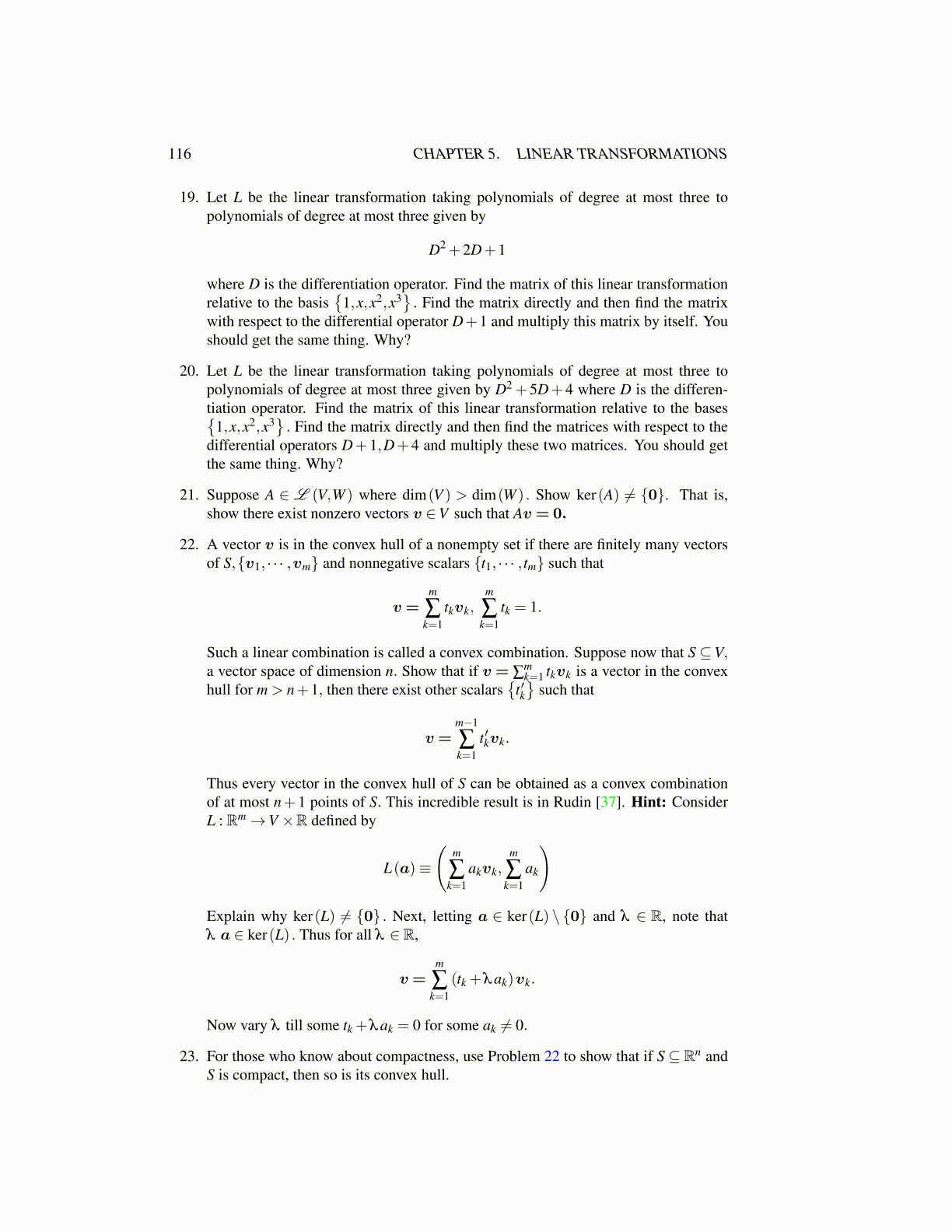
116 CHAPTER 5. LINEAR TRANSFORMATIONS
19. Let L be the linear transformation taking polynomials of degree at most three topolynomials of degree at most three given by
D2 +2D+1
where D is the differentiation operator. Find the matrix of this linear transformationrelative to the basis
{1,x,x2,x3
}. Find the matrix directly and then find the matrix
with respect to the differential operator D+1 and multiply this matrix by itself. Youshould get the same thing. Why?
20. Let L be the linear transformation taking polynomials of degree at most three topolynomials of degree at most three given by D2 + 5D+ 4 where D is the differen-tiation operator. Find the matrix of this linear transformation relative to the bases{
1,x,x2,x3}. Find the matrix directly and then find the matrices with respect to the
differential operators D+ 1,D+ 4 and multiply these two matrices. You should getthe same thing. Why?
21. Suppose A ∈ L (V,W ) where dim(V ) > dim(W ) . Show ker(A) ̸= {0}. That is,show there exist nonzero vectors v ∈V such that Av = 0.
22. A vector v is in the convex hull of a nonempty set if there are finitely many vectorsof S,{v1, · · · ,vm} and nonnegative scalars {t1, · · · , tm} such that
v =m
∑k=1
tkvk,m
∑k=1
tk = 1.
Such a linear combination is called a convex combination. Suppose now that S ⊆V,a vector space of dimension n. Show that if v = ∑
mk=1 tkvk is a vector in the convex
hull for m > n+1, then there exist other scalars{
t ′k}
such that
v =m−1
∑k=1
t ′kvk.
Thus every vector in the convex hull of S can be obtained as a convex combinationof at most n+1 points of S. This incredible result is in Rudin [37]. Hint: ConsiderL : Rm→V ×R defined by
L(a)≡
(m
∑k=1
akvk,m
∑k=1
ak
)
Explain why ker(L) ̸= {0} . Next, letting a ∈ ker(L) \ {0} and λ ∈ R, note thatλ a ∈ ker(L) . Thus for all λ ∈ R,
v =m
∑k=1
(tk +λak)vk.
Now vary λ till some tk +λak = 0 for some ak ̸= 0.
23. For those who know about compactness, use Problem 22 to show that if S ⊆ Rn andS is compact, then so is its convex hull.